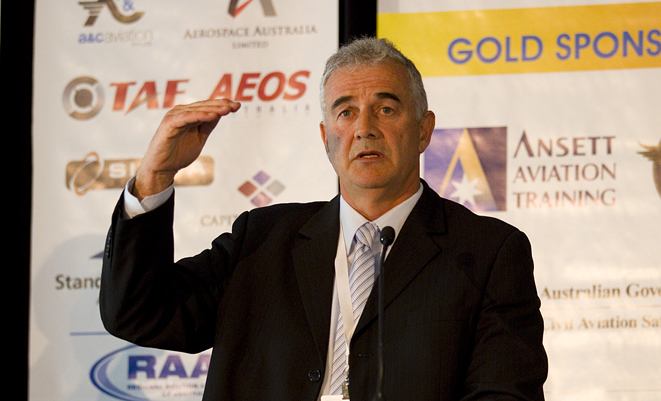
Australian Transport Safety Bureau (ATSB) boss Martin Dolan says he is cautiously optimistic missing Malaysia Airlines flight MH370 will eventually be found.
Dolan says the ATSB has resumed the search for the missing aircraft this week, following months spent looking at more data and mapping the ocean floor in the likely search area.
“We are cautiously optimistic about success,” Dolan told delegates at the Regional Aviation Association of Australia (RAAA) national convention in the NSW Hunter Valley on Friday.
“The caution is that sea floor is hugely complex. But on the other side of that, the optimism is we are very confident of these calculations and we are very confident in the equipment of the crews and the searching capability we’ve got out there.
“So we are giving it our best shot. It will take us up to a year.”

The Australian Maritime Safety Authority (AMSA) spent 42 days searching the 4.7 million square kilometres of the Indian Ocean for missing Boeing 777-200ER 9M-MRO in March and April 2014, conducting 345 flight sorties and logging 3,177 total flight hours. It used 10 civilian aircraft from Australia and New Zealand, as well as 18 military aircraft from seven countries that were based out of Perth.
At the end of AMSA’s 42-day search, responsibility was handed over to the ATSB.
“As Martin said, I have cautious optimism that it will be found, I hope some time in my lifetime,” chief of the MH370 rescue coordination centre at AMSA Craig Condon said at the convention.
“If it is not found then I would say that’s understandable, it doesn’t surprise me.”
The ATSB has been mapping the ocean floor and looking at more satellite and other data – including analysing ocean drift patterns and modelling what happened when the aircraft ran out of fuel – to determine the most likely location of MH370.
However, the search area was still a very large at between 60,000 – the size of Tasmania – and 100,000 square kilometres, Dolan said.
“We know a lot more about the middle of the Indian Ocean than we ever expected to do in terms of the sea floor,” Dolan said.
“And as of this week we have a vessel, the first of three out there, towing sidescan sonar equipment 100 metres above the ocean floor that we have mapped looking for debris.”
















Bruce Robertson
says:The best evidence in the southern Indian Ocean remains to be the underwater pings detected in early- to mid-April by the Ocean Shield. MH370 lies just north/northwest of the Ocean Shield detections, just beyond the Zenith Plateau yet near the 7th satellite ping ring. The line segment formed by the series of apparent ping sources points the way.
Adrian Paddington
says:As the Avalon Airshow 2015 is only a week before the fist anniversary of the loss of MH370, perhaps the organisers could have a commemoration by inviting back those who took part in the search to do a flypast.
Sam Lacey
says:Whilst im not really into conspiracy theories even after reading all of them, for some reason its seems strange you cant see any of the vessels conducting the underwater search on marinetraffic.com?
Greg Smith
says:How does a Cost Benefit Analysis (Social return on Investment) stack up for a project of this nature,”if found in Mr Dolans’ lifetime”?
Mark
says:Sam,
There’s no conspiracy buddy…the reason those ships might not be appearing on marinetraffic.com is that the transmission of positions for that system relies on the Automated Identification System (AIS) and this system relies on a VHF radio transmission that might be out of range of receiving stations. The reality is that only a fraction of the actual shipping traffic appears on such websites as ships don’t have the sort of transponder information that aircraft have such as ADS-B.
I can assure you that those ships are out there searching. And they will be so for a very long time, methinks.